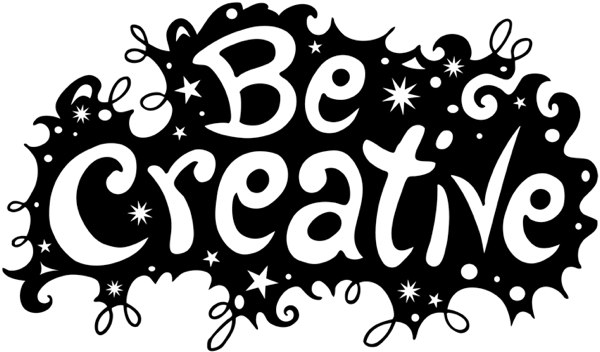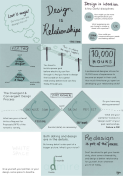There is a bit of a conundrum going on in the creative professional community. The problem? The Internet is seemingly cheapening the efforts of high-profile designers, programmers, and other similar jobs on the Web. It’s a global issue, and it is likely only to get worse!
What really sparked this controversy is
another recent controversy that surrounded the historic and memorable GAP logo. The company had decided to change its brand and identity with a refresh of its logo. But it was a disaster and nothing more. The logo failed to impress anyone, and even I was shocked at how poorly it was executed. But I wasn’t the only one that noticed.
The whole Internet seemingly took notice, and even people who would not typically be interested in this type of discussion jumped in to voice their opinion about the disgust of the change. Clearly, Gap had made a huge mistake, which the company acknowledged.
Rightfully, Gap had intended to go back to the drawing board, and they did. So the crisis was averted, right? No… not quite.
Things got even more chaotic after Gap stated that
they would hold a contest on their Facebook account, where they asked users to
submit logo ideas and designs. This is a task normally handled by a professional in brand identity, who would do the necessary research and brainstorming with the company to design a brand identity that would be suited for the company. These designers take pride in their work, and they expect to be compensated for it as well. But the route that Gap was taking would avoid them altogether — the creative community took notice.

There was an immediate uproar from the design community about Gap’s attempt to forego the traditional process from which developing a brand identity is usually done. This is actually quite common on some websites, where people bid or simply submit logo designs for a client and then the client chooses the winner and pays for the rights to the logo. Admittedly, this might be great for a small business who simply can’t invest the time and resources into hiring a designer to do the job, but that alone still creates controversy from the design community.
Regardless, Gap is not a small or even medium sized business. Gap is a huge corporation with stores around the globe. Surely they can afford to hire a professional to do the work. But they didn’t. And it appears that the design community took that as a slap in the face. Not only because it seemingly discredits the efforts of professional designers, but that could have set a trend where other large companies opt to forego the design process altogether.
Worldwide Competition (aka Outsourcing)
There is no beating around the bush on this issue: the whole design contest thing seems to stem from those attempting to capitalize on outsourcing. Many designers, who are great in their own right, originate from countries like India, Singapore, and other developing countries. They are willing to do design work for much cheaper than what you might expect in other countries in the Americas and Europe. So many companies opt to go that route. And I’m sure they will continue to do so in greater amounts.
So how will designers cope with these trends? Will designers be forced to lower rates and work for less because of the increase in global competition? Will they, too, be forced to compete for work without necessarily being compensated for their efforts in design competitions? Will they simply forge ahead and continue the grind?
I can’t answer these questions, because I am not a designer. I am merely one who appreciates good design and enjoys it as a hobby. But I can’t even begin to imagine what thoughts would be going through my mind if freelance design was my career choice. It seems like things are bound to get tougher, as competition increases and access to that competition becomes more apparent through Internet services.

But this is a potential issue for all creative professionals. Web designers must compete with open source platforms that continue to grow more powerful and easier to install with increasing options in themes and designs being distributed for free. Visual effects and motion graphic artists must compete with the worldwide interest in the arts, where those without college education and with plenty of time on their hands can create work comparable to those with the best education money can buy. Music production studios can be created for a few hundred dollars, instead of the thousands it used to require a decade ago. Skills can be acquired, as long as the determination and drive is there.
So those who have been in the creative industry for years might need to accept that things are changing. And it is mostly in part because now everyone is facing worldwide competition; the Internet is the largest contributing factor to these developments. The playing field continues to level out. And while I have faith that many will be able to adjust, I’m sure that there will be many who won’t.
Have you got a story about how the design industry is being cheapened by the internet? Share it with everyone in our comments section.
 There was an immediate uproar from the design community about Gap’s attempt to forego the traditional process from which developing a brand identity is usually done. This is actually quite common on some websites, where people bid or simply submit logo designs for a client and then the client chooses the winner and pays for the rights to the logo. Admittedly, this might be great for a small business who simply can’t invest the time and resources into hiring a designer to do the job, but that alone still creates controversy from the design community.
Regardless, Gap is not a small or even medium sized business. Gap is a huge corporation with stores around the globe. Surely they can afford to hire a professional to do the work. But they didn’t. And it appears that the design community took that as a slap in the face. Not only because it seemingly discredits the efforts of professional designers, but that could have set a trend where other large companies opt to forego the design process altogether.
There was an immediate uproar from the design community about Gap’s attempt to forego the traditional process from which developing a brand identity is usually done. This is actually quite common on some websites, where people bid or simply submit logo designs for a client and then the client chooses the winner and pays for the rights to the logo. Admittedly, this might be great for a small business who simply can’t invest the time and resources into hiring a designer to do the job, but that alone still creates controversy from the design community.
Regardless, Gap is not a small or even medium sized business. Gap is a huge corporation with stores around the globe. Surely they can afford to hire a professional to do the work. But they didn’t. And it appears that the design community took that as a slap in the face. Not only because it seemingly discredits the efforts of professional designers, but that could have set a trend where other large companies opt to forego the design process altogether.
 But this is a potential issue for all creative professionals. Web designers must compete with open source platforms that continue to grow more powerful and easier to install with increasing options in themes and designs being distributed for free. Visual effects and motion graphic artists must compete with the worldwide interest in the arts, where those without college education and with plenty of time on their hands can create work comparable to those with the best education money can buy. Music production studios can be created for a few hundred dollars, instead of the thousands it used to require a decade ago. Skills can be acquired, as long as the determination and drive is there.
So those who have been in the creative industry for years might need to accept that things are changing. And it is mostly in part because now everyone is facing worldwide competition; the Internet is the largest contributing factor to these developments. The playing field continues to level out. And while I have faith that many will be able to adjust, I’m sure that there will be many who won’t.
Have you got a story about how the design industry is being cheapened by the internet? Share it with everyone in our comments section.
But this is a potential issue for all creative professionals. Web designers must compete with open source platforms that continue to grow more powerful and easier to install with increasing options in themes and designs being distributed for free. Visual effects and motion graphic artists must compete with the worldwide interest in the arts, where those without college education and with plenty of time on their hands can create work comparable to those with the best education money can buy. Music production studios can be created for a few hundred dollars, instead of the thousands it used to require a decade ago. Skills can be acquired, as long as the determination and drive is there.
So those who have been in the creative industry for years might need to accept that things are changing. And it is mostly in part because now everyone is facing worldwide competition; the Internet is the largest contributing factor to these developments. The playing field continues to level out. And while I have faith that many will be able to adjust, I’m sure that there will be many who won’t.
Have you got a story about how the design industry is being cheapened by the internet? Share it with everyone in our comments section. 



